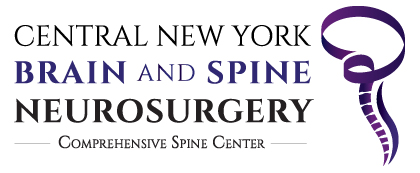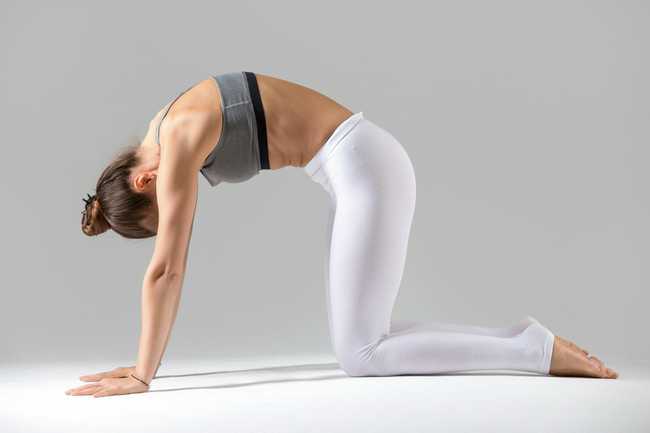Are you someone who suffers from lower back pain?If so, you’re not alone. In fact, it’s estimated that in the US, 80% of adults experience lower back pain at some point in their lives. Lower back pain can wreak havoc on your life. Luckily, there are a lot of treatments out there that can help you alleviate your pain. One of the best treatments is lumbar stretching. What lumbar stretching should you do for lower back pain?Check out this guide to discover how to do lumbar stretches to ease lower back pain.
1. Child’s Pose
One of the best stretches to do for lower back pain is the child’s pose. This is a traditional yoga pose that works your hamstrings, gluteus maximus, and spinal extensors. This stretch helps alleviate pain and tension along your neck, spine, and shoulders. It also has a relaxing effect on your body that helps to loosen your lower back muscles, in turn promoting blood circulation and flexibility along your spine. Here’s how to do the child’s pose stretch:
- Sit with your hands and knees on the ground, and sink back with your hips to rest them on your heels
- Walk your hands in front of you and fold forward as you rest your stomach on your thighs
- Face your palms up and extend your arms either in front of you or alongside your body
Hold this stretch for about a minute, and focus on breathing deeply and relaxing any areas of tightness and tension. If you feel like you need extra support during this stretch, you can place a rolled-up towel on top of or under your thighs. You can also widen your knees or rest your head on a cushion for extra comfort.
2. Knee to Chest Stretch
Another great stretch to perform for lower back pain is the knee to chest stretch. This stretch helps relax your thighs, glutes, and hips while promoting overall relaxation. Here’s how you perform this stretch:
- Lie on your back with both of your knees bent and your feet flat on the floor
- Bend your right knee or extend it straight on the floor
- Draw your left knee into your chest, clasping your hands behind your thigh
- Lengthen your spine and avoid lifting your hips
- Breathe deeply to release tension and hold this pose for one minute
Afterward, repeat with the other leg. If you need extra padding, you can place a pillow under your head.
3. Trunk Rotation
The trunk rotation is excellent for relieving tension in your lower back. This stretch also helps work your core muscles, which include your back muscles, abdominals, and pelvis muscles. Here’s how to perform a trunk rotation stretch:
- Lie on your back and bring your needs toward your chest
- Extend your arms to your sides with your palms flat on the floor
- As you keep your knees together and your hands on the floor, roll your knees gently to one side of your body
- Hold this pose for about 20 seconds, and then roll your bent knees to the other side
Repeat this stretch for about 5 to 10 times on each side.
4. Wall Sits
A lot of people spend hours per day sitting at a desk. In fact, a recent study found that the average American spends 6.4 hours per day sitting. All of this sitting can cause pain and tension in your lower back. Luckily, wall sits can offer a nice break from sitting at your desk or sitting on the couch. Here’s how to perform a wall sit:
- Stand with your back flat against the wall
- Slowly slide down the wall until your knees are bent slightly
- Press your lower back into the wall and hold this position for 10 seconds
You can slide back up the wall and then repeat this move 8 to 12 times.
5. Seated Spinal Twist
This stretch helps to work your glutes, hips, and back. It works to increase mobility in your spine, as well as stretch your abdominals, neck, and shoulders. This stretch can also help stimulate your internal organs. Here’s how to perform this stretch:
- Sit on the floor with your legs extended in front of you
- Bend your left knee and place your foot to the outside of your right thigh
- Bend your right leg, placing your foot near your left thigh
- Place your left hand behind you for support
- Place your right arm around your left leg as if you’re hugging it
Hold this pose for one minute, and then repeat on the other side.
6. Pelvic Tilt
The pelvic tilt stretch helps you build strength in your abdominal muscles, which can help relieve tightness and pain in your lower back. It can also help strengthen your hamstrings and glutes. Here’s how you do the pelvic tilt stretch:
- Lie on your back with your feet flat on the floor and your knees bent
- Keep your back flat against the floor and engage your abdominal muscles
- Slightly lift your hips off the floor
Repeat this several times and perform several sets, making to take a few deep breaths.
7. Sphinx Stretch
The sphinx stretch is a relaxing stretch that allows you to stretch and strengthen your spine, chest, and buttocks. Here’s how you perform the sphinx stretch:
- Lie on your stomach with your elbows underneath your shoulder and your palms on the ground
- Lift your head and your chest as you keep your buttocks, lower back, and thighs engaged
- Breathe deeply and stay strong in your abdominals and lower back
Press your pelvis into the floor and hold this pose for at least one minute.
8. Cat-Cow Stretch
The cat-cow stretch is an excellent way to relieve pain and tension in your spine while also stretching your neck, chest, and shoulders. Here’s how you perform the cat-cow stretch:
- Come onto all fours in a tabletop position
- Press your feet and hands into the floor as you inhale deeply and look up, allowing your stomach to fill up with air
- As you exhale, arch your spine to the ceiling and tuck your chin into your chest
- Continue this movement pattern with each breath
Perform this stretch for one to two minutes. If you suffer from wrist problems, place your hands slightly forward instead of directly underneath your shoulders.
9. Supported Bridge
To perform the supported bridge stretch, you’ll need a foam roller or a firm cushion. This stretch will help support your lower back. Here’s how you perform this stretch:
- Lie on your back flat on the floor with your knees bent
- Lift your hips and place a firm cushion or foam roller underneath
- Completely relax your body into the floor and into the foam roller/cushion
- Hold this pose for 30 to 60 seconds, and repeat the stretch 3 to 5 times, resting 30 to 60 seconds between each set
You can extend one or both legs from their bent position in order to increase the stretch in your lower back.
10. Seat Forward Bend
Tight hamstrings are thought to contribute to lower back pain, which is why the seat forward bend is a great stretch to perform. Here’s how you perform a seat forward bend stretch:
- Sit on the floor with your legs in front of you
- Wrap a bath towel around the soles of your feet
- Gently bend your hips forward, bringing your stomach down to your thighs
- The towel will help you bring your stomach closer to your legs
- Stretch until you feel a bit of tension in your lower back and legs
Hold this stretch for 30 seconds, rest for 30 more, and then repeat 3 times. You can grab the towel closer or further from your feet in order to increase or decrease the tension of the stretch.
11. Lateral Leg Lift
Lateral leg lifts help work the hip abductor muscles. Hip abductor muscles support your pelvis and help relieve pain in the back. Keeping these muscles strong is very important, as they help you maintain balance and improve mobility. Here’s how you perform a lateral leg lift:
- Lie on your side with your legs together
- Keep your bottom leg slightly bent
- Draw your belly button into your spine to engage your abdominal muscles
- Lift your upper leg about 1.5 feet, keeping it extended and straight
- Hold this position for 2 seconds, and repeat 5 to 10 times
- Turn to the other side and repeat
Perform this stretch 3 times on each side.
Lumbar Stretches: Are You Ready to Stretch?
Now that you know about these lumbar stretches, it’s time to test them out. Before you know it, you’ll be experiencing less pain in your lower back. If you think you may need professional treatment or your lower back pain, make sure to get in touch with us today. Additionally, if you’re experiencing neck pain, make sure to check out this guide to discover the causes and treatments of moderate to severe neck pain.

